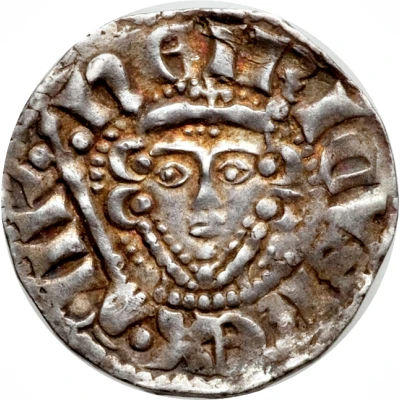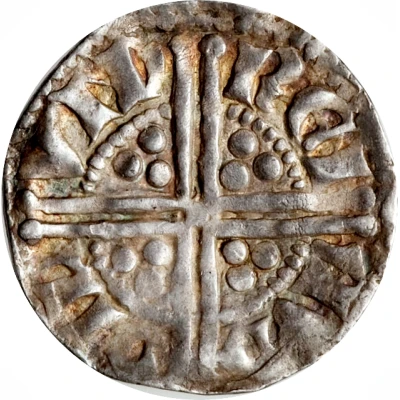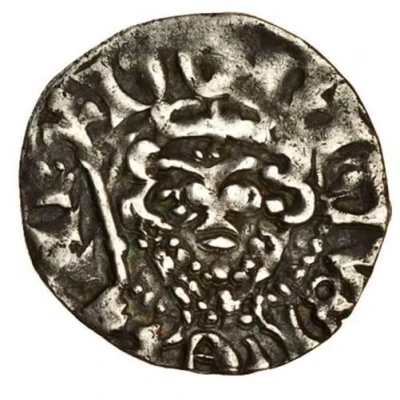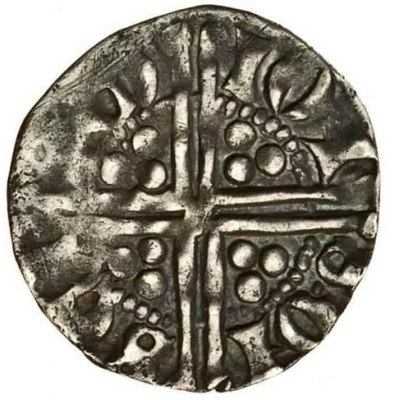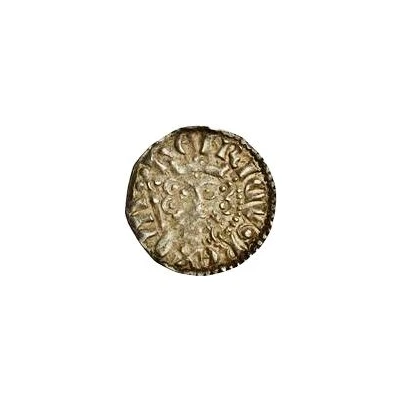
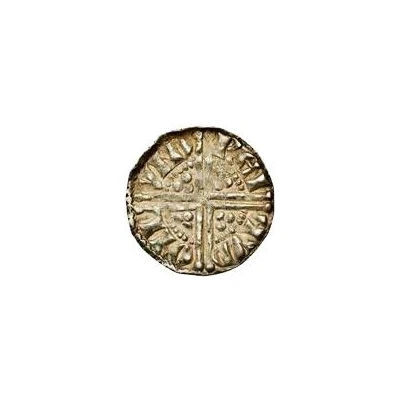

© Spink and Son
1 Penny - Henry III Long Cross type; class 5h ND
| Silver | 1.34 g | 18 mm |
| Issuer | England (United Kingdom, British Overseas Territories and Crown Dependencies) |
|---|---|
| King | Henry III (1216-1272) |
| Type | Standard circulation coin |
| Years | 1270-1272 |
| Value | 1 Penny (1⁄240) |
| Currency | Pound sterling (1158-1970) |
| Composition | Silver |
| Weight | 1.34 g |
| Diameter | 18 mm |
| Shape | Round (irregular) |
| Technique | Hammered |
| Demonetized | Yes |
| Updated | 2024-10-08 |
| Numista | N#323555 |
|---|---|
| Rarity index | 95% |
Reverse
Legend around voided long cross, with central pellet, triple pellets in quarters.
Script: Latin
Lettering: RЄN AVD ONL VND
Translation: Renaud of London
Comment
House of Plantagenet (1154-1399), Henry III (1216-1272), Long cross coinage (1247-79), Phase III (Post-provincial), Class 5h.No mintmark, struck at the London, Canterbury and Bury St Edmunds mints, c.1270-72.
For more details visit Rod Blunt's website here.
By the middle of Henry's reign the Short Cross coinage in circulation was in a poor state and, in 1247, a new coinage was ordered with the cross on the reverse extended to the edge of the coin in an attempt to prevent clipping. The earliest coins (1a) showed the names of neither the mint nor the moneyer. Class 1b includes the name of the mint and from Class 2 onwards all coins show the name of both the mint and the moneyer.
Interesting fact
One interesting fact about the 1 Penny - Henry III (Long Cross type; class 5h) ND (1270-1272) coin is that it was minted during a time of great change in England. Henry III, who ruled from 1216 to 1272, was the first English king to issue a silver penny, which replaced the earlier copper pennies. This change in currency was significant because it reflected the growing influence of trade and commerce in England during the 13th century. The silver penny also helped to standardize currency across the country, making it easier for people to conduct transactions and do business.
